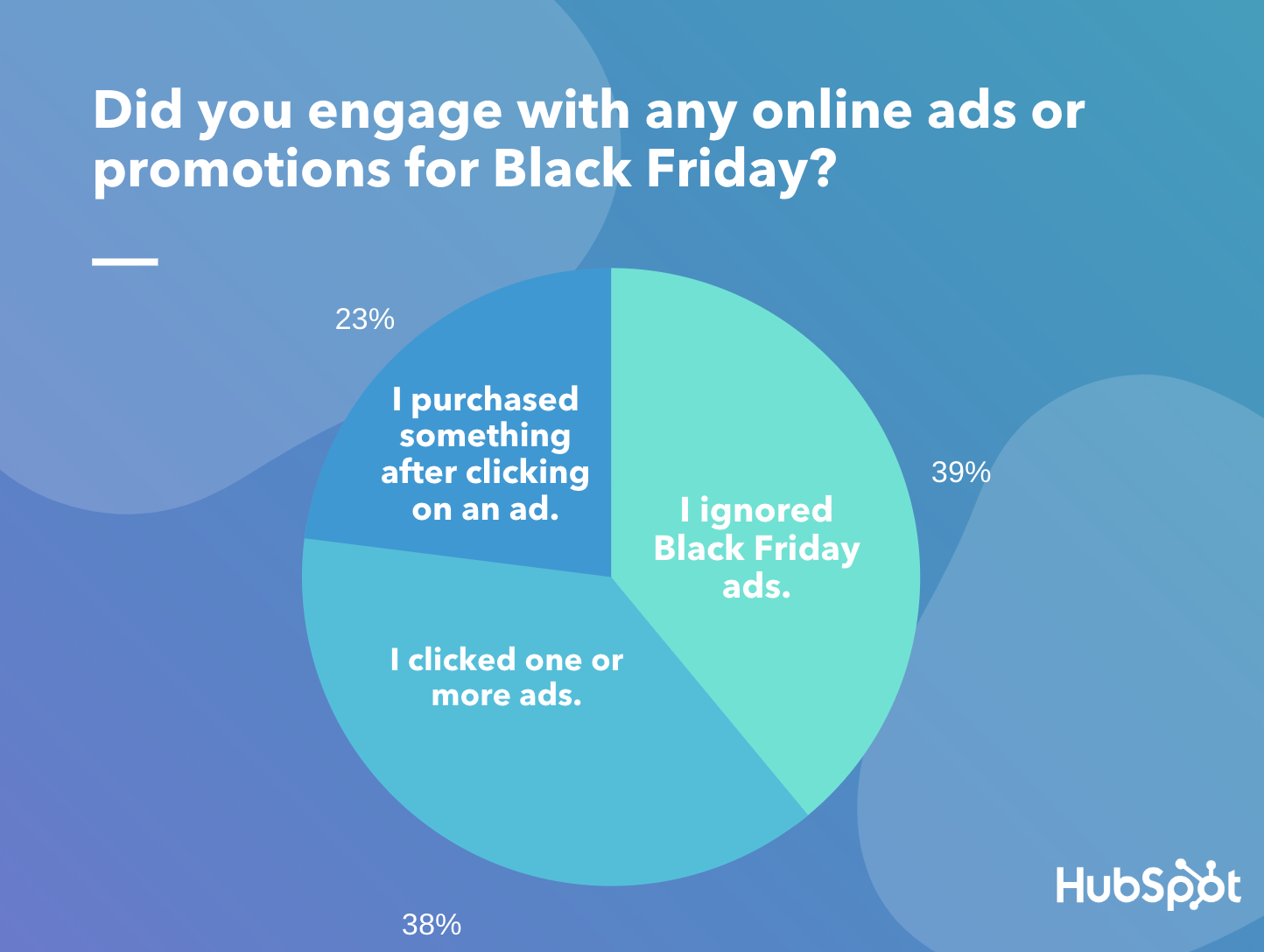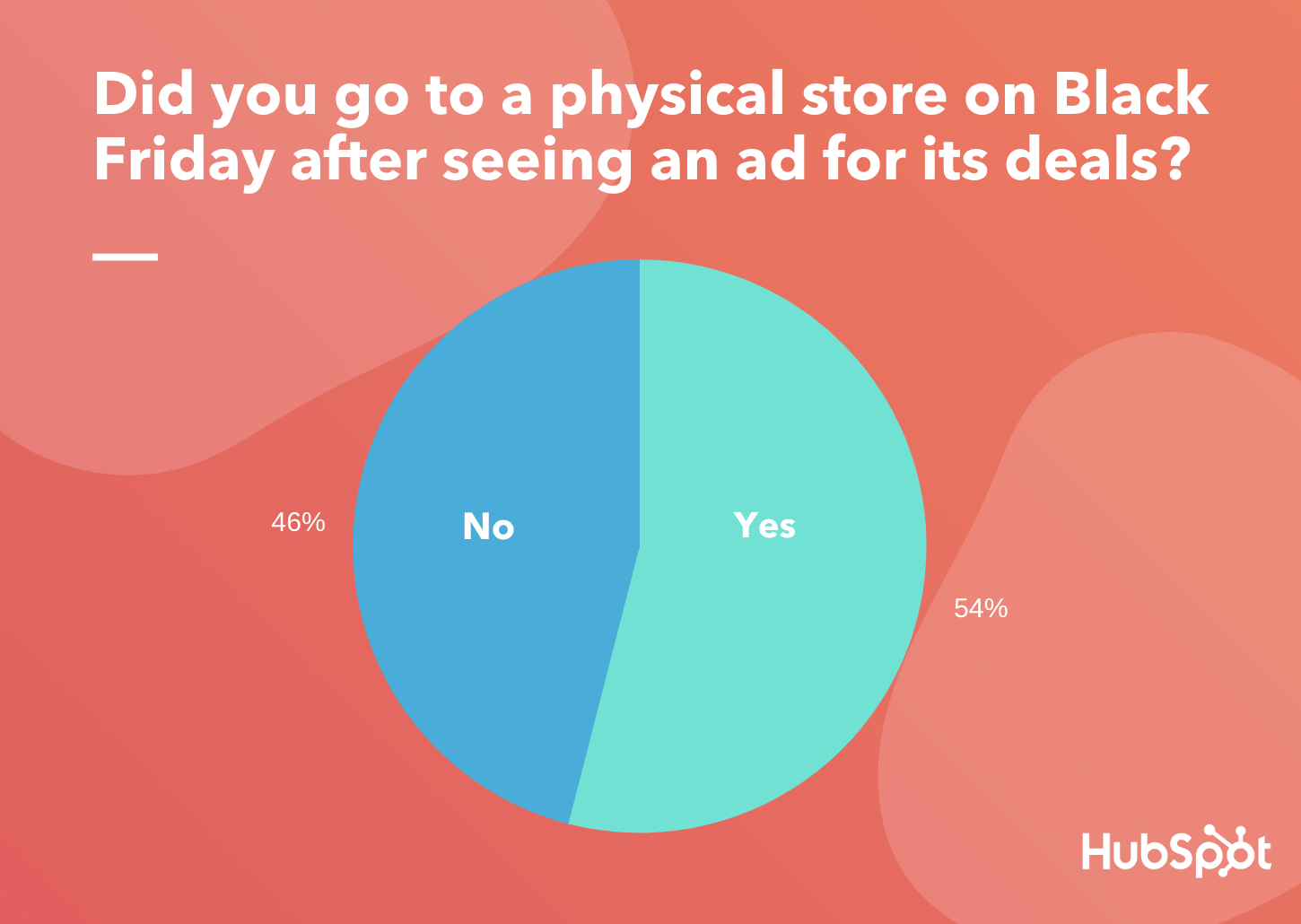Although Cyber Monday is described as the biggest online shopping event of the year, more than $7.4 billion in online purchases were made on Black Friday in 2019.
While a majority of Black Friday purchases happened online, a Fiserv study found that brick-and-mortar store purchases rose by 4.2% compared to 2018. The same study found that a quarter of people traveled 25 miles or more to stores with Black Friday discounts.
By now, you may know that this was one of the biggest Black Fridays ever. But, as a marketer, you might be wondering what drove people to overcrowded stores and ecommerce websites during the national shopping event. You also might want to learn more about consumer shopping behaviors to strengthen your overall strategy in 2020.
To help you discover more about the consumer behaviors behind Black Friday’s 2019 results, I surveyed a pool of more than 300 people using Lucid Software to learn what led them to engage with or purchase products in Black Friday ads.
In this post, I’ll fill you in on what I learned from these consumers, arm you with other helpful stats and facts about Black Friday, and offer takeaways that you can use in 2020.
Black Friday’s Online Ad Engagement
With crazy Black Friday deals comes an inundation of Black Friday ads throughout all forms of media. It’s no surprise that millions of people shopped on Black Friday — but which ad strategies actually led to purchases?
With more brick and mortar stores than ever, and the bombardment of ads that comes with them, do these Black Friday promotions actually influence purchases? To learn more about the Black Friday ad behaviors, I asked consumers about how they interacted with ads for the shopping holiday.
While you might think that people would get annoyed with the constant stream of ads, or try to completely disregard them, you’ll be slightly surprised by the results.
When I asked participants, “Did you engage with any online ads or promotions for Black Friday?”, 61% said they engaged with one or more ads in some way, while only 39% said they disregarded them.

Data Source: Lucid Software
Of that 61% of people who engaged with one or more ads, 38% clicked on the promotions without making a purchase, while 23% converted to a customer after clicking the ad.
When it comes to where people saw the ads they clicked on, 62% found promotions on social media.

Data Source: Lucid Software
“Non-social media sites” were also a fairly successful place for promotion, with 38% of people saying they clicked on ads in these locations. These sites could include websites owned by other brands where a native ad is located, search engine platforms, or other areas of the web that aren’t considered social media.
Although only 32% of people said they clicked on ads shown in marketing emails, recent research still shows that this tactic is still a vital part of digital marketing. In fact, CampaignMonitor recently published research showing that email marketing was responsible for 20% of holiday-related traffic.
Aside from the ad’s location, the product or service advertised could have played a role in an audience’s level of engagement. To get an idea of which products were most popular, I asked survey participants, “Which best describes the products or services that were featured in the Black Friday ads you clicked on.”
Of those who said they clicked on or purchased something from an ad in the first question of the survey, roughly 36% said the ads they engaged with featured products in the “Gadgets and Technology” category. Meanwhile, two other popular categories were “Fashion and Beauty” and “Home Goods, Furniture, and Decor” which both received votes from more than 18% of participants.
Ads and Black Friday Foot Traffic
In 2019, in-store Black Friday foot traffic dropped 6% lower than in 2018. However, this shopping event was still significant for brick-and-mortar stores as earnings from in-store purchases still rose by 4.2%.
Much of the in-store foot traffic and purchases could have also been because of ads. When I asked consumers if they “entered a store on Black Friday after seeing an ad or promotion for its sales,” more than half said, “Yes.”

Data Source: Lucid Software
To determine how much impact online ads made on Black Friday foot traffic as compared to physical ads, I asked the same consumers, “Where did you see the Black Friday ads for the store you visited on Black Friday?” Those surveyed could choose from a long list of ad style options from more digital social media promotions to traditional TV commercials or newspaper advertisements.
Although these participants decided to brave crowded physical stores on Black Friday, the survey found that they weren’t pulled into them by physical or more traditional ads like billboards, newspaper promotions, or commercials.
Again, social media was the front-runner, as 38% of people who entered stores on Black Friday found ads on these types of platforms first.
Aside from social media, 15% of those who visited a store due to a Black Friday ad said they saw it on the store’s own website. Only small portions of those surveyed said they went to a store after seeing television commercials (7%), email marketing ads (7%), newspaper promotions (8%), or physical signage (1%).
However, keep in mind that this was still a rather small sample and that it should not completely rearrange your marketing strategy in 2020.
While only 7% of those surveyed found ads that led them to visit a physical store in marketing newsletters, data shows that including ads and offers in emails is still a vital strategy for gaining web visits, leads, and even in-store foot traffic. We don’t encourage pulling email marketing from your strategy just because of one pool of shoppers’ Black Friday behaviors.
What Black Friday Means for 2020 Marketing
If you’re running a brick-and-mortar or ecommerce operation, these results, as well as mounting research show the importance of developing or constantly improving on a web presence, whether that means purchasing online ad space or taking on free strategies like building a social media profile or creating a Google My Business for your store.
Due to social media’s popularity and track record for ROI, you’ll definitely want to consider advertising or at least posting for free about your products on platforms that align well with your audience if you aren’t doing so already.
If you’re trying to build your social presence, or determine which platforms you should be promoting your products or deals on, check out this research-based blog post where I reveal which social media platforms people use to learn about products.
You should also consider experimenting with or expanding on other online tactics to expand on or create a highly digital promotional strategy. For example, continue marketing products your own website, placing native ads on other websites, and embracing email marketing within your strategy.
Boosting your web presence will not only help you promote sales and events, such as Black Friday. But this strategy could also boost brand awareness and conversions throughout the rest of the year.

